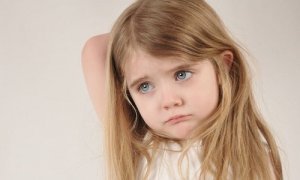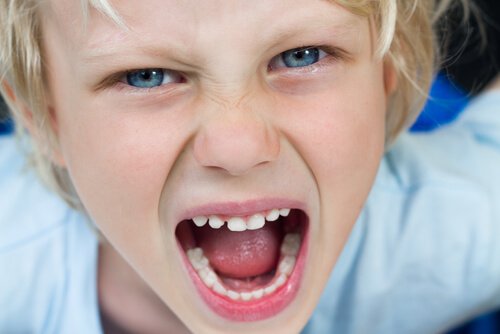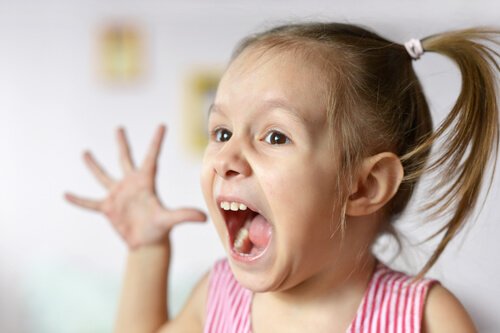Bipolar Disorder in Children

Have you noticed that your child experiences very intense moods? Do they show extreme changes in behavior? Do they have very sad periods, and suddenly become very enthusiastic, sometimes with an exaggerated joy? If this type of behavior occurs daily, your child may suffer from bipolar disorder.
However, not all sudden and intense changes in mood in children mean that they suffer from bipolar disorder. This can only be confirmed by a mental health specialist after adequate evaluation. Although most cases are diagnosed in older children and adolescents, it can occur at any age.
What constitutes bipolar disorder in children?
Bipolar disorder affects a child’s mood and energy, causing sudden changes in their emotional state.

Sometimes they feel excessively happy and run around and play without stopping. It’s a period of extreme excitement. This state is called mania. Other times they feel very sad, with a state of discomfort that influences their activity level and energy. This is known as depression.
Unlike bipolar disorder in adults, in children both manic and depressive symptoms occur during the same day or may appear simultaneously. Therefore, bipolar disorder in children can be more serious at this stage than in adolescence or adulthood.
With that said, it’s important to clarify that bipolar disorder is not the same as the normal ups and downs of behavior and mood that any child can experience. In fact, it’s often difficult for children who suffer from the disorder to do their school work or socialize with their classmates and family.
Mania
The essential characteristic of a manic episode is a period of an abnormal and persistently elevated, or irritable mood. It also brings about an abnormal or persistent increase in activity or energy.
A child’s mood during a manic episode is often described as euphoric, excessively cheerful, or “feeling above the world.” In children, joy, “nonsense” and “silliness” are normal in the context of special circumstances.
However, if these symptoms are recurring, inappropriate for the context, and go beyond what’s expected for their level of development, then you should pay attention.
High activity levels and grandiosity
During a manic episode, a child might involve him or herself in many new games at once. Even, sometimes during untimely hours of the day. In addition, they have very high self-esteem that ranges from self-confidence lacking criticism to grandiosity, and sometimes even delusions of grandeur.
Children usually overestimate their abilities and believe, for example, that they’re the best at a certain sport or the smartest in their class. The child’s conviction about their grandiosity is still present despite clear evidence to the contrary. In addition, the child could attempt a feat that is clearly dangerous.
Less need for sleep
One of the most frequent characteristics of mania is a lesser need for sleep. This is different from insomnia. In insomnia, a person wants to sleep or feels the need to sleep but can’t, while during an episode of mania, a person sleeps little or wakes up several hours earlier than usual, feeling rested and full of energy.
Often, a lesser need for sleep signals the onset of a manic episode.
Depression
Depression refers to a set of related symptoms that appear and disappear together. Usually, these symptoms are sadness, irritability, loss of interest, and fatigue. You may also see:
- Feelings of inferiority and guilt
- Slowing in psychomotor skills
- Insomnia
- Suicidal thoughts
- Lack of appetite
- Weight loss
- Difficulty concentrating
It’s important to remember that children often feel sad, listless, irritable, tired, or guilty. It’s necessary to differentiate the appearance of these normal emotions from depression.

Thus, for example, you must differentiate a child’s normal lack of motivation or boredom when doing certain tasks, from a persistent and generalized disinterest in all kinds of activities.
It’s also necessary to differentiate a small appetite and the tendency to perpetuate meals, from the pronounced loss of appetite that constitutes a symptom of depression. You also need to differentiate the usual tiredness that results from long school days and extracurricular activities, from continuous fatigue.
Symptoms of bipolar disorder in children
Children who suffer from a manic episode may feel:
- Excessively happy
- Suddenly throw a temper tantrum
- Speak quickly about many different things
- Have difficulty staying asleep but wake up feeling rested
- Have problems concentrating
- Perform dangerous behaviors
Children who suffer a depressive episode may feel:
- Very sad
- Complain about headaches or stomach aches
- Sleep too little or too much
- Feel inferior to others
- Feel guilty
- Have very little energy
- Lack of interest in fun games
- Suicidal thoughts
What causes bipolar disorder in children?
As with many other disorders and diseases, there’s no single cause to explain the origin of bipolar disorder in children. Thus, there are several factors that can cause it.
Genetics play an important role in the development of bipolar disorder in children since it’s hereditary. So, children with a family history are more likely to develop it.
On the other hand, some have hypothesized that there’s some abnormality in the structure or function of the brain. One piece of information to ponder is that bipolar disorder is more common in rich countries than in poor countries.

The treatment for children with bipolar disorder is similar to that of adults. Treatment can help control symptoms and works best when it’s continuous and uninterrupted. Medications are often useful for mood stability.
With proper treatment, children with bipolar disorder tend to improve over time. However, it’s usually normal to have to try several times before coming up with the ideal treatment for each person.
All cited sources were thoroughly reviewed by our team to ensure their quality, reliability, currency, and validity. The bibliography of this article was considered reliable and of academic or scientific accuracy.
- Comeche Moreno, Mª Isabel. Manual de terapia de conducta en la infancia.Dykynson-Psicología. Madrid, 2012.
- American Psychiatry Association (2014). Manual diagnóstico y estadístico de los trastornos mentales (DSM-5), 5ª Ed. Madrid: Editorial Médica Panamericana.
This text is provided for informational purposes only and does not replace consultation with a professional. If in doubt, consult your specialist.








